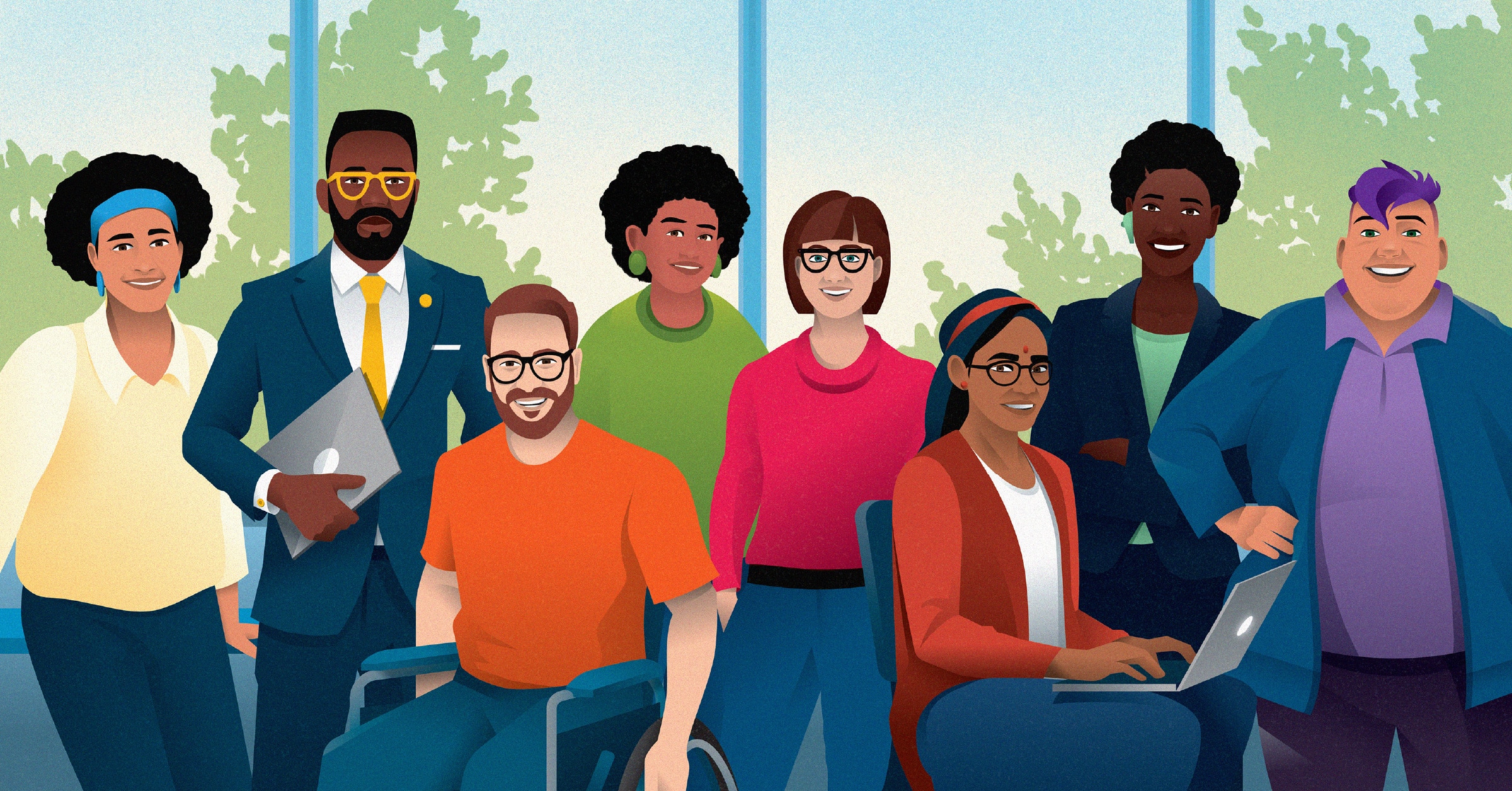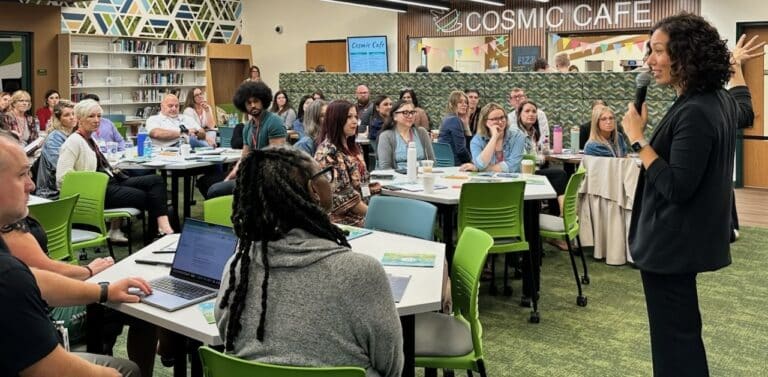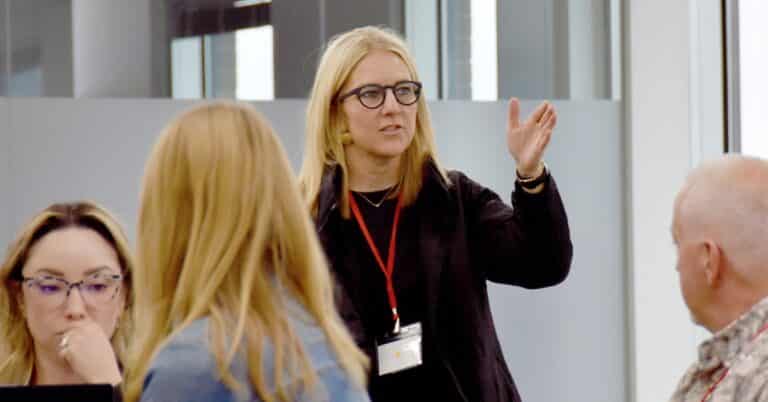As educators and education constituents work to make education systems equitable and learner-centered, we must take a fresh look at what education systems ask the people working in them to do.

Forces putting pressure on the education system can either lead it to fall behind or to drive innovation. Various drivers of change will create new opportunities – and challenges – that affect how we consider the roles of educators. In Envisioning Educator Roles for Transformation, we explore four drivers affecting the future of educator roles.
- Accelerating technologies
- Intensifying climate crisis
- Civic polarization
- Shifting economy
In exploring these drivers, imagine future educator roles in a workforce that could support and prepare for those drivers of change.

Envisioning Roles for Transformation
Accelerating technologies
Artificial intelligence (AI) is developing rapidly. ChatGPT and other generative AIs are now in people’s hands, with increasingly powerful versions being released frequently. In addition, other emerging technologies such as augmented and virtual reality and blockchain have been gaining in capability and application. Together, these accelerating technologies are creating new opportunities for how educators design learning experiences and spend their time. They are also deepening concerns about digital equity, privacy and data security. A tension is emerging as to whether people will have the means to influence when and how they interact with AI in educational settings and how transparent its decision-making processes will be.
Intensifying climate crisis
Climate change is placing intensifying demands on people across the planet. While eco-anxiety and physical health impacts have been increasing, so have efforts to mitigate the consequences of climate change through sustainable practices. Over the next decade, schools and school districts could struggle to maintain their operations amidst disruptions. In addition, they could find themselves serving more and more young people who have had to move or who are managing health conditions linked to climate change.
Civic polarization
More and more people living in the U.S. have been questioning the role of government and losing trust in public institutions. Political polarization and cultural wars have been intensifying even as a national reckoning around the rights of Black, Indigenous and other people of color has gained momentum. Education has increasingly been the focus of debates, as evidenced by increasing attention to school board elections; ever-increasing attempts to ban books; and the spread of bills giving parents, governments and citizens the ability to challenge and monitor what schools teach about race and gender. Over the next decade, education is likely to remain at the center of public debate, complicating efforts to pursue intentional system redesign.
Shifting economy
Generative AI is increasingly leading people to partner with smart machines. It is also exacerbating the potential for the technological displacement of human workers, especially knowledge and creative workers. Other factors, such as the aging of the U.S. population, heightened national security concerns and workers’ increasing quests for better working conditions, are also shifting the economic landscape. Changes to work and the economy could complicate what it means for schools to prepare young people for life after the K-12 years.






